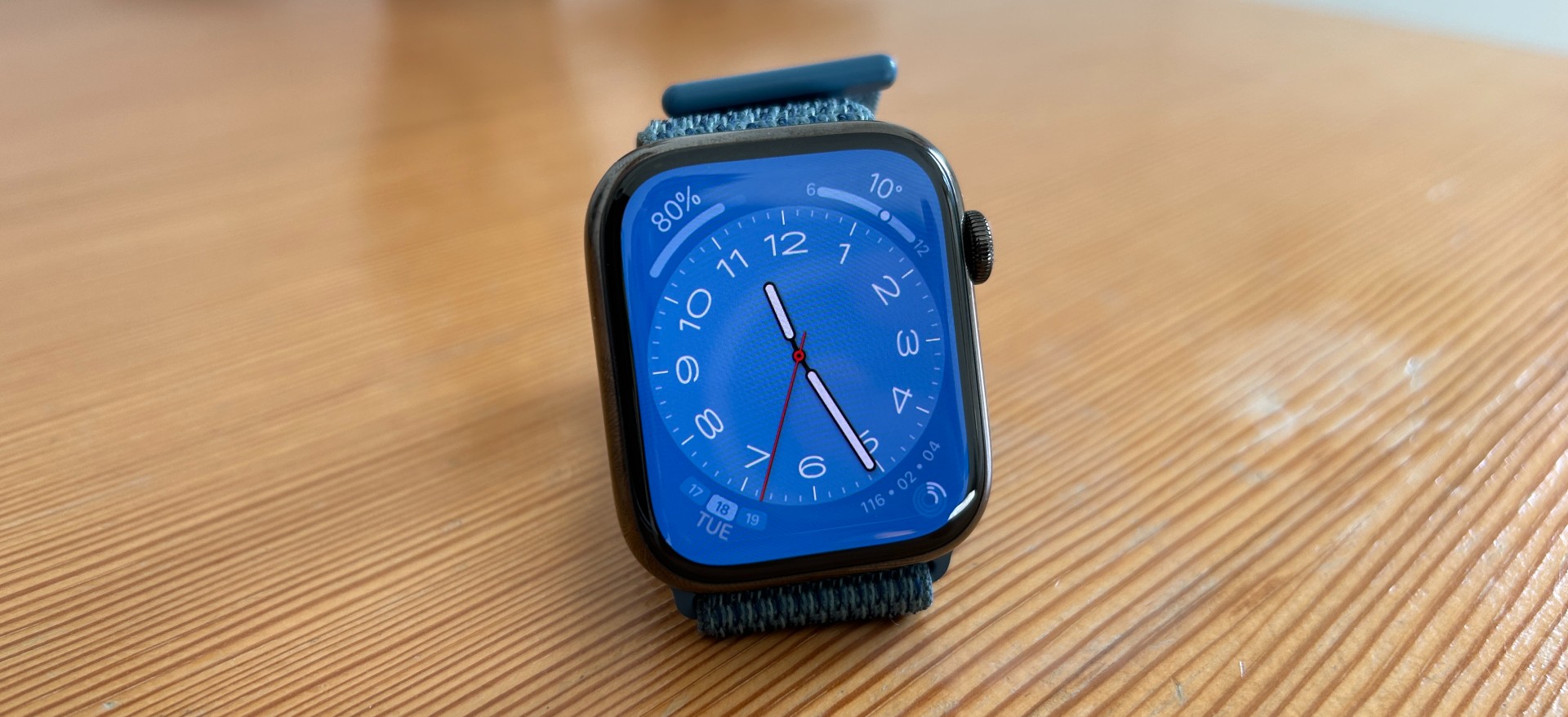Our Verdict
There’s very little new on the Apple Watch Series 8 compared with the Series 7, but it is now the best-value fitness smartwatch since it’s so much cheaper than the Apple Watch Ultra.
For
- Improved software for sports tracking
- Great design
- New temperature sensor
- Half the price of the Apple Watch Ultra
Against
- One-day battery life
- Not a huge update on Series 7
- The Ultra has better sports features
You can trust Coach
The Apple Watch has always been the best fitness smartwatch, largely because of its sleek design and impressive app store. However, the Apple Watch Series 8 has been replaced as the flagship sports smartwatch in Apple’s line-up by the Apple Watch Ultra.
While the Ultra does offer some useful upgrades like an extra button, longer battery life and multi-band GPS tracking, the Series 8 is better value and still well worth considering if you’re looking for a sporty smartwatch. Just bear in mind that you need an iPhone to use it.
Apple Watch Series 8: Price And Availability
The Apple Watch Series 8 was announced on 7th September 2022 and pre-orders shipped on 14th September. It costs from $399 in the US and £419 in the UK for the 41mm watch, and from $449/£449 for the 45mm. Those are the prices for the GPS versions; if you add in cellular/4G capabilities it costs an extra $100/£100.
The Series 8 is much cheaper than the new Apple Watch Ultra, which costs $799/£849, while the Apple Watch SE 2 offers a cheaper alternative, starting at $249/£259 for the 40mm watch and $279/£299 for the 44mm.
How I Tested The Watch
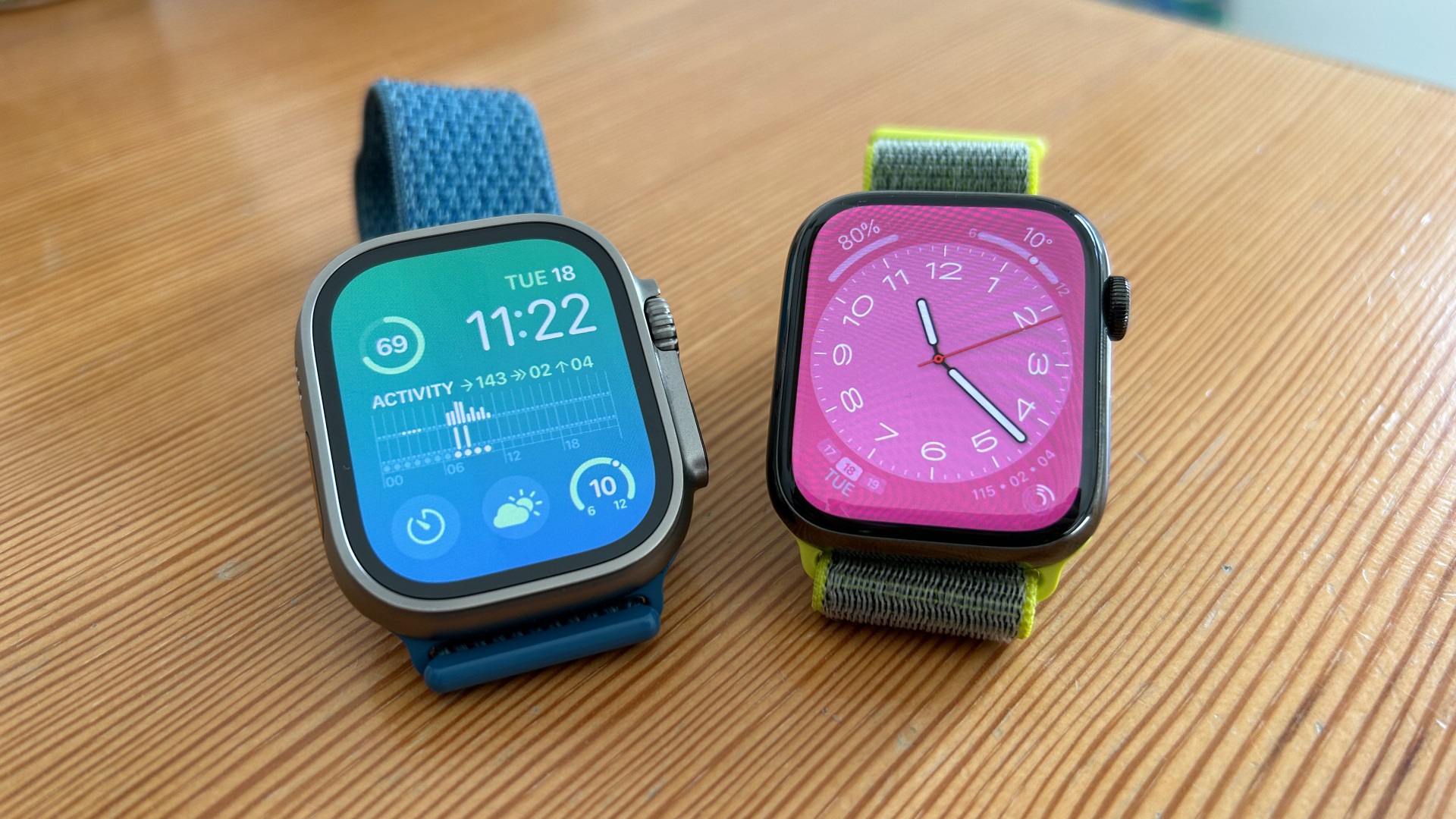
I have been testing the Apple Watch Series 8 for two weeks, wearing it at the same time as the Apple Watch Ultra to compare the watches. I have tracked around 50km of running with the Series 8, along with some bike rides, strength and yoga sessions, and a hike. I have also tested every previous generation of the Apple Watch Series devices.
Design And Hardware
Very little has changed about the Apple Watch Series 8’s design compared with the Series 7. Aside from some new colours, the Series 8 has the exact same case and screen design as the previous generation, with the digital crown and button on one side.
It’s a fantastic screen and the design in general is excellent. The Series 8 is small and comfortable to wear at all times, and sleeker and more attractive than the Ultra in my opinion.
There are some changes under the hood, with the Series 8 now packing a wrist temperature sensor that tracks your skin temperature at night. It also has an improved gyroscope and a new accelerometer that can detect if you’ve been in a severe car crash.
The Series 8 also has a compass and an altimeter, and GPS tracking via GPS, GLONASS, Galileo, QZSS, and BeiDou satellite systems simultaneously, though it doesn’t offer the multi-band GPS tracking that the Apple Watch Ultra has. It is water-resistant to 50m.
Sports Tracking
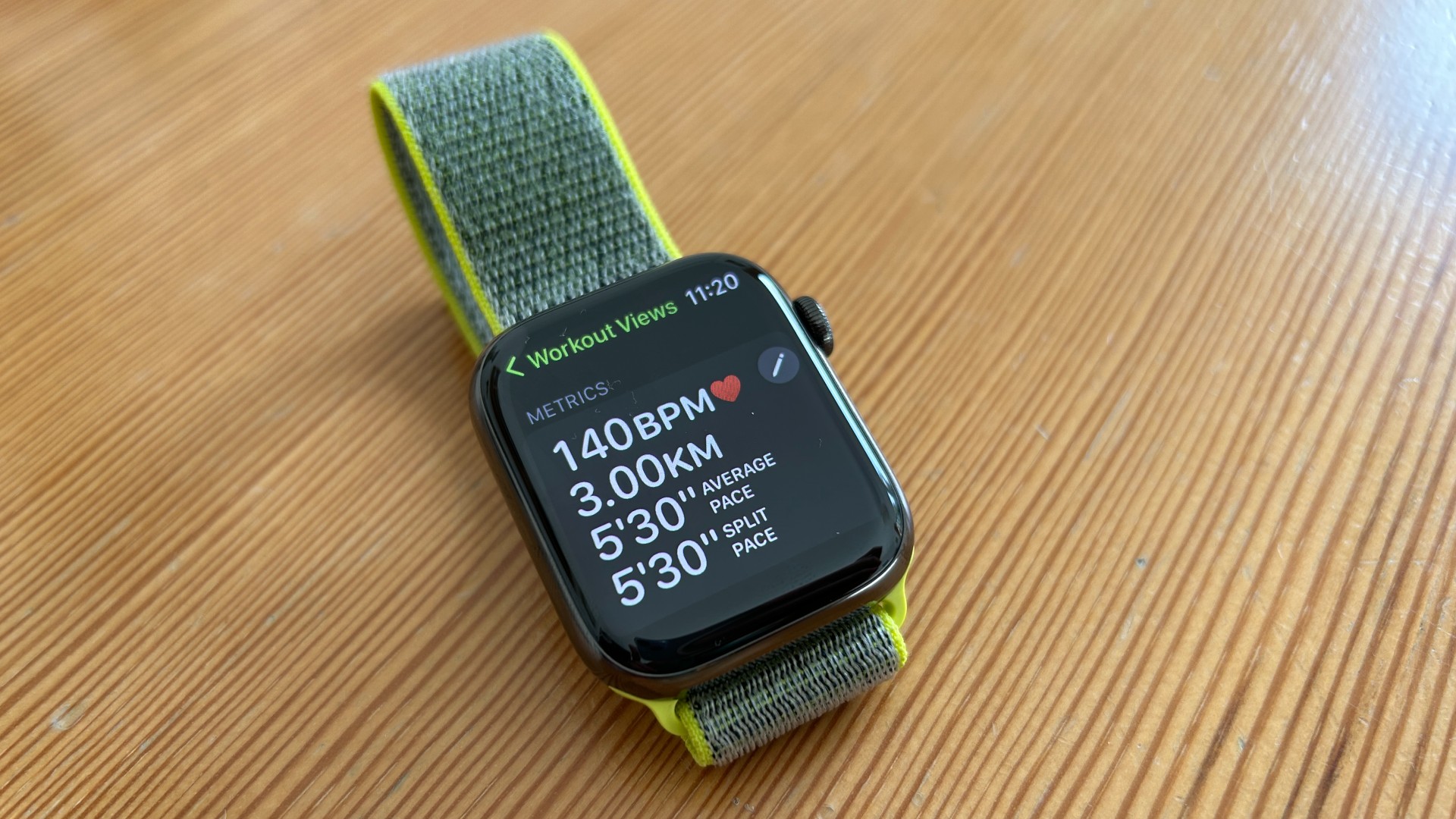
In the past the Apple Watch’s native sports tracking was merely OK, although easy to upgrade using the app store with third-party options like WorkOutDoors that offered a much better experience and made the device more comparable to a dedicated sports watch.
The watchOS 9 software update made significant improvements to the native tracking on the Apple Watch, though, and this is a benefit that extends to all models of the watch dating back to the Series 4.
Some of the most notable improvements are a new multisport mode for triathletes and a broader range of stats tracked during workouts that you can display on multiple data screens. This includes stats like lap pace (called split pace), running power measured from the wrist, and alerts based around heart rate and cadence. You can also create and follow structured workouts on the watch, and some running technique stats are also measured by the watches, like ground contact time and vertical oscillation.
The experience is still not quite as good as on a dedicated sports watch, or indeed the Apple Watch Ultra. The Ultra has an extra button which can be used as a lap button, plus a precision start mode that lets you check you have GPS locked on before beginning an outdoor workout.
However, the native tracking is now good enough that even keen sportspeople will get what they need from the Apple Watch for the most part, and you can still easily upgrade the experience with a third-party app that offers more data field customisation and maps within the app to help you navigate during outdoor activities, like WorkOutDoors.
GPS And Heart Rate Accuracy
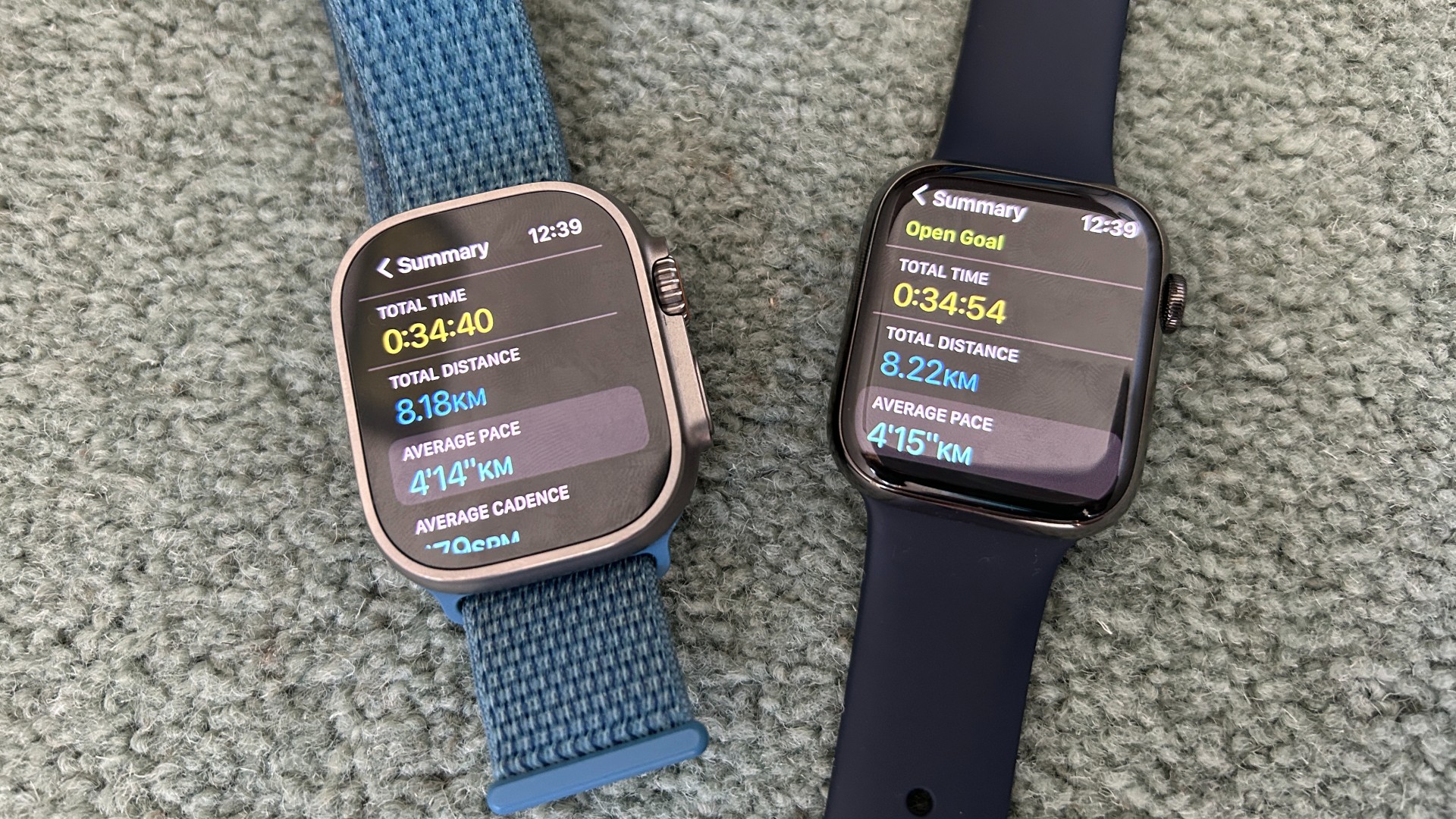
The past few versions of the Apple Watch have all impressed me with the accuracy of the GPS and heart rate tracking, and that remains the case with the Series 8. Its GPS tracking matched up well with the dual-band tracking of the Apple Watch Ultra and Garmin Epix 2, although it did experience just a few more errors like corners being cut a tiny bit short and more wiggliness to the tracked route under tree cover.
It’s annoying that the precision start option wasn’t made available on the Series 8, especially as you can see the status of the GPS signal in third-party apps. This is a standard feature on sports watches that allow you to see whether the GPS is locked on before you begin running. With the Series 8 you have to trust the watch has acquired a GPS signal when you hit start, which can lead to dodgy readings at the beginning of a run if it hasn’t locked on.
The heart rate accuracy of the Series 8 actually outperformed the more expensive Ultra, I suspect largely because the Series 8 is a smaller watch that sits more snugly against my thin wrists than the bigger Ultra. You can also pair an external chest strap to the watch for even more reliable heart rate tracking. I’d recommend doing this since I did have drop-outs at times where it wasn’t able to pick up a heartbeat.
Health, Activity And Sleep Tracking
Again, the activity tracking on the Series 8 is similar to that of previous generations. The three activity rings to fill in each day remain, an approach which has always proved an engaging way to keep me moving even as a very sporty person.
The sleep tracking remains a weak spot on the watch. Basic information about your time asleep and time spent in different sleep stages is provided in the morning, but the level of detail falls short of the tracking on Fitbit, Polar and Huawei devices in particular, and there is no real coaching to help you improve your sleep.
There is a reason to wear the watch at night, though, which is the new temperature sensor. Over the first few nights of wearing the watch you set a skin temperature baseline and then each morning you can see in the Health app on your iPhone if there have been any significant deviations from that baseline overnight.
Deviations can occur for a number of reasons, such as illness or alcohol consumption, but the main feature that benefits from the sensor is women’s health tracking, which should now be more accurate in tracking your menstrual cycle.
I tested positive for COVID-19 while wearing the Apple Watch Series 8 and it did track a significant rise in my skin temperature during the illness, the measurements matching up closely with the skin temperature readings of the Apple Watch Ultra on my other wrist,
It would be good to be able to see the temperature readings on the watch, rather than having to open the app on your phone. It’s also worth bearing in mind that to get the readings you’ll have to find a way to charge your watch during the day, since the Series 8 only lasts one day on a charge.
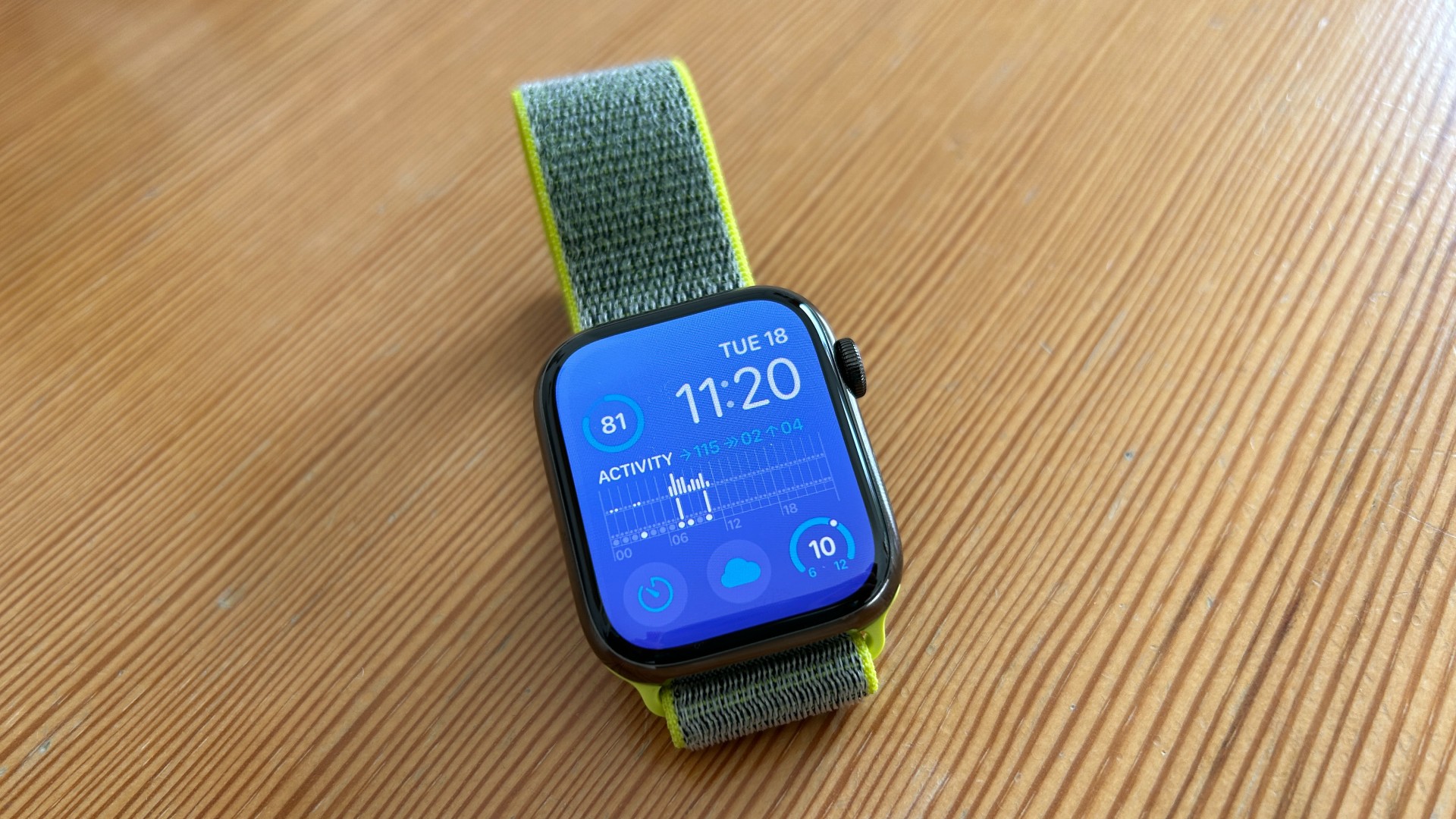
Battery Life
Nothing has changed with the battery life on the Series 8. It is listed as 18 hours by Apple, though it tends to get through 24 hours pretty reliably in my experience, even with an hour-long run in that time.
The Apple Watch Ultra offers double the battery life of the Series 8 and lasted me two days comfortably, while dedicated sports watches around the price of the Series 8 will often last a week or even two on a charge.
You can see why the Series 8 needs charging every day – it’s a small watch with a power-hungry feature-set – but having to find a window to charge it in the day so you can use it at night can create an annoyance at times, and in the long term I’d rather just charge it overnight and skip the sleep and temperature tracking to ensure it lasts through the day.
Navigation And The Compass App
Another major update that has come to all Apple Watches from the Series 4 onwards is a revamped Compass app. You can now set waypoints that you can navigate to using the app, and there’s a backtrack mode you can use to retrace your steps.
These are handy additions but they are not well-integrated to the watch. You have to use the Compass app itself to see where the waypoints are, or set up and follow the backtrack trail. For the features to be truly useful they’d need to be available within the Workout app – this is common on sports watches with breadcrumb navigation, where your trail is recorded as a data screen in the workout so you can retrace your steps back to the start.
You can also use dedicated mapping apps like Apple Maps, of course, and there are third-party sports tracking apps with full maps like WorkOutDoors and Komoot. It’s an area I expect Apple to improve in the next software or hardware update, but so far the new navigation features are limited by being confined to the Compass app.
Is The Apple Watch Series 8 Worth It?
If you already have a recent Apple Watch like the Series 5, 6 or 7 there’s no compelling need to upgrade to the Series 8. The watchOS 9 software update is a huge improvement that you get on the older devices, and the significant hardware addition of wrist temperature is an occasionally handy but far from essential feature.
Picking between the Apple Watch Series 8 and Apple Watch Ultra is hard, but the Series 8 certainly provides better value overall. The Ultra’s longer battery life and extra button do undoubtedly make it a more impressive sports tracker, but I’m not sure that’s worth twice as much, and the design of the Series 8 is more attractive – to me at least.
Against the wider field of smartwatches, the Apple Watch is well clear of the competition as a sporty smartwatch. Its native tracking and app options are significantly better than those of Wear OS devices like the Samsung Galaxy Watch 5 Pro or Suunto 7.
There are some semi-smart watches that don’t have access to a proper app store that are good sports trackers, though, like the Amazfit T-Rex 2 and Huawei Watch GT Runner. I still prefer the Apple Watch’s tracking and it’s much smarter, but they are good, more affordable alternatives for Android users.
Another good option is the Garmin Venu 2 Plus, which is platform-agnostic and offers brilliant native sports tracking. It isn’t all that smart, though there are some apps in the ConnectIQ app store, but it does offer music storage and the AMOLED screen looks the part of a smartwatch.

Nick Harris-Fry is a journalist who has been covering health and fitness since 2015. Nick is an avid runner, covering 70-110km a week, which gives him ample opportunity to test a wide range of running shoes and running gear. He is also the chief tester for fitness trackers and running watches, treadmills and exercise bikes, and workout headphones.
